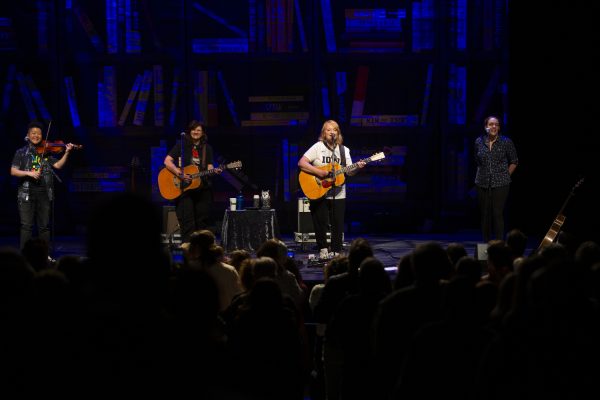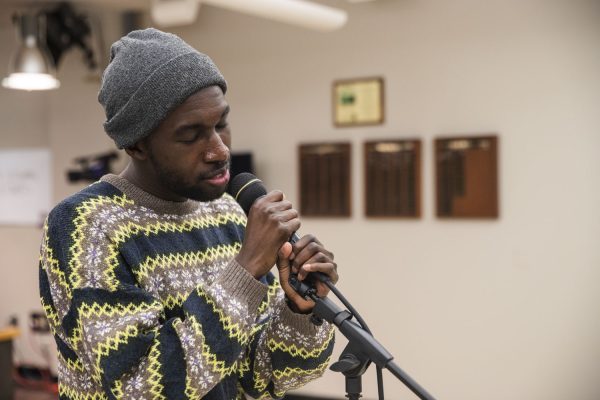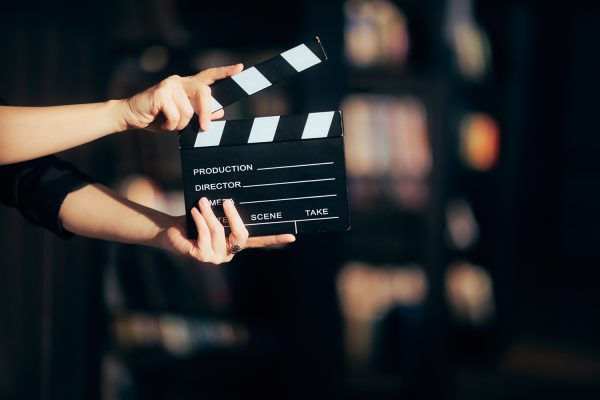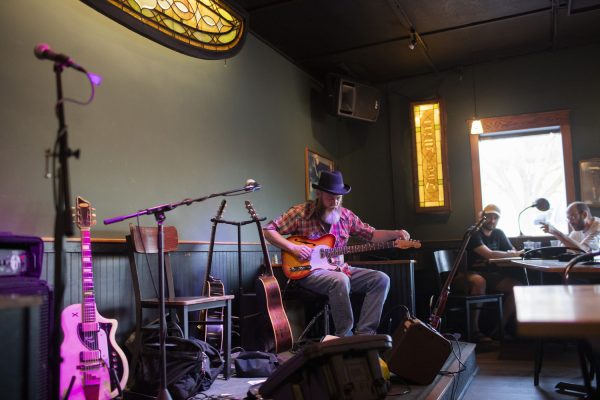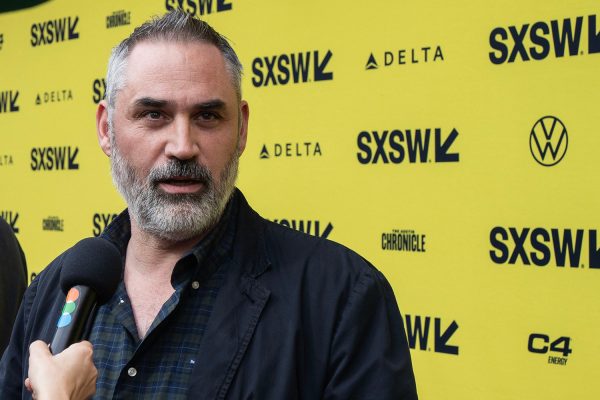Performing arts at UI to take a new, socially distanced approach this fall
As a result of COVID-19, performing arts classes and performances at the University of Iowa will consist of a hybrid of online and in-person learning this semester.
Photo of Thayer Theatre, where the UI Department of Theatre Arts has blocked out spaces for social distancing in movement classes.
August 6, 2020
The University of Iowa has adapted many of its courses and events in an attempt to provide a safe learning environment for students starting at the end of August. Classes in the departments of music, theater, and dance — fields which often require close contact — are looking particularly different this coming semester.
As fields that often require movement and physical presence, the Department of Theatre Arts and Department of Dance are reimagining the spaces in which they practice their art form. Rebekah Kowal, the chair of the Department of Dance, said that the department is branching out from its home in Halsey Hall to use a variety of other available spaces across campus, such as Hancher’s Strauss Hall, Hubbard Park, and even the basketball courts behind Burge Residence Hall.
“Dance also demands certain facilities conditions, such as certain sorts of flooring for movement and spaces with high ceilings and mirrors… so we just tried to reimagine the dance studio,” she said.
Mary Beth Easley, the chair of the Department of Theatre Arts, said the department has closed two of its theaters and turned them into classrooms. Social distancing “squares” are blocked off in the classrooms that will allow students in movement-oriented or voice classes to participate in activities while remaining a safe distance away from their peers. Many of these classes will also be offered in a hybrid format, combining in-person and online learning.
“Our focus has been to keep everybody as safe as possible in what we’re doing, to limit the amount of people that are there, to give us the opportunity to do some of the things that you want them to do and need to do in person, while keeping people safe,” Easley said.
The School of Music has taken a similar approach, providing 30-minute music lessons either online or in person depending on the choice of the student and their instructor. Large ensembles, like the Hawkeye Marching band, will be broken up into smaller groups that will meet outdoors, in larger spaces, or virtually.
Related: University of Iowa fall plans spark concern for UI faculty and graduate students
Professor Tammie Walker, the director of the School of Music, stressed that all of the department’s decisions have been made with the assistance of a team of University of Iowa bioaerosol specialists. Their expertise led to the implementation of what they believe to be the safest possible practices for the fall semester.
The department will also adhere to university policies, including social distancing both in and outside of class and wearing face coverings at all times, Walker said.
Both the School of Music and the Theatre Department plan to offer livestreamed performances, Walker and Easley said, some of which may allow a small, invitation-only audience to attend in person. Those audiences will be capped at 50 people per university policy, Walker added.
“If a student is giving their degree recital that they’ve been working on for years and they want their parents and their grandparents and their brother and sister to be there, we’re going to allow that… but having just big audiences as we know it definitely isn’t going to happen for quite a while,” Walker said.
Easley said that despite changes, the Department of Theatre Arts plans to put on the same number of performances as usual. The department has integrated productions that allow for social distancing on stage, with scenes featuring a limited number of actors at one time.
Walker, Kowal, and Easley all expressed their appreciation for their students, as well as their commitment to making this year count despite the difficulties that may arise.
“I’m thankful that we as artists in academia have the opportunity to continue to create and to continue to set up an environment where students can also create,” Easley said.





